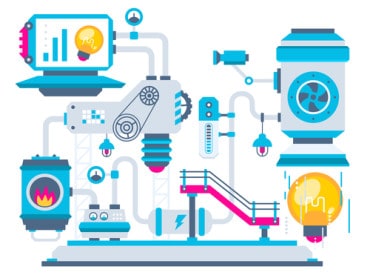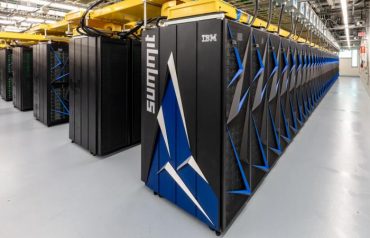
Lack of technical skills and analytics capabilities are seen as challenges to industrial IoT projects.
The Industrial Internet of Things (IoT) — in which analysis is performed on big data from industrial machines and enterprise DB systems — may be the most profound force to sweep the business landscape since the internet. The industrial IoT enables high-value use cases such as predictive maintenance of expensive equipment, optimization of manufacturing, and supply-chain analytics. However, few companies are ready to embrace the opportunities and challenges the Industrial IoT presents.
A recent survey of 350 executives finds that most are excited about the potentially significant improvements in operational efficiency and uptime that Industrial IoT will bring, as well as growth from new business models, products, services and customer experiences. A sizeable portion, 41%, expect it to have a significant or major impact on their industry within three years. However, barely two percent of large companies have a clear vision for how to move forward or have significant implementations underway.
The survey was developed by the BPI Network in partnership with the CMO Council, Penton’s IoT Institute, and The Nerdery, a digital strategy, software engineering and design firm. Executives anticipate a range of benefits from their Industrial IoT efforts, including more cost-efficient operations (47%), product and service differentiation (36%) and improved customer engagement and satisfaction (34%).
With the potential business impact and competitive stakes so high, “industry leaders will need to make increasing investments in people, processes and technology to improve their IIoT competitiveness over the next few years,” the researchers state. “They will need to invest in talent, tools and technologies that can accelerate transformation… The impact of connectedness on competitiveness will become increasingly clear over the next few years. How it reshapes industrial markets is now a work in progress, with the potential for significant gains and dislocation among IoT leaders and laggards over the foreseeable future.”
All good news for vendors, tools providers, systems integrators and consultants, of course. There’s enough angst and feelings-of-being-left-behind about Industrial IoT to keep wallets open across the world for many years to come.
Industrial IoT challenges
The survey identifies several challenges to fully embracing the potential of Industrial IoT. The real-time aspect of Industrial IoT is still limited, but gaining ground. Only 12%, for example, give their company an “excellent” rating in their capacity to develop and deploy applications that leverage real-time insights and systems monitoring. Another 35% rate that capacity as “good.” One third rate their corporation’s ability in this area as “moderate and improving.”
Security and data privacy are seen as top concerns by executives, followed by the cost and complexity of Industrial IoT adoption and the need for new management and workforce skills and training.
The skills gap – training or finding people to ensure intelligent and actionable connectedness across a range of systems, devices and sensors – is the most profound challenge at this time. A majority, 51%, are worried about having the right technical skills. About one-third would consider their talent shortages to represent a “major skill gap” in their IoT readiness. Another 31% say the talent gap is “large, but improving somewhat.” Twenty percent say their IoT skills are quickly improving. Only seven percent believe they have most of the skills they need in place at this time.
Additional challenges to Industrial IoT implementations include the need for better data integration and analytics capabilities (41%), and 33% even indicate they need to rethink their business model.
There are numerous Industrial IoT-related pilot projects and proofs of concept underway. At least 57% of executives state they are either beginning implementation, have pilots underway or are committed and in the planning stages. New products and services lead as the area most companies say they will focus their IoT investments (35%), followed by customer touch points (29 %), and manufacturing (23%).




























